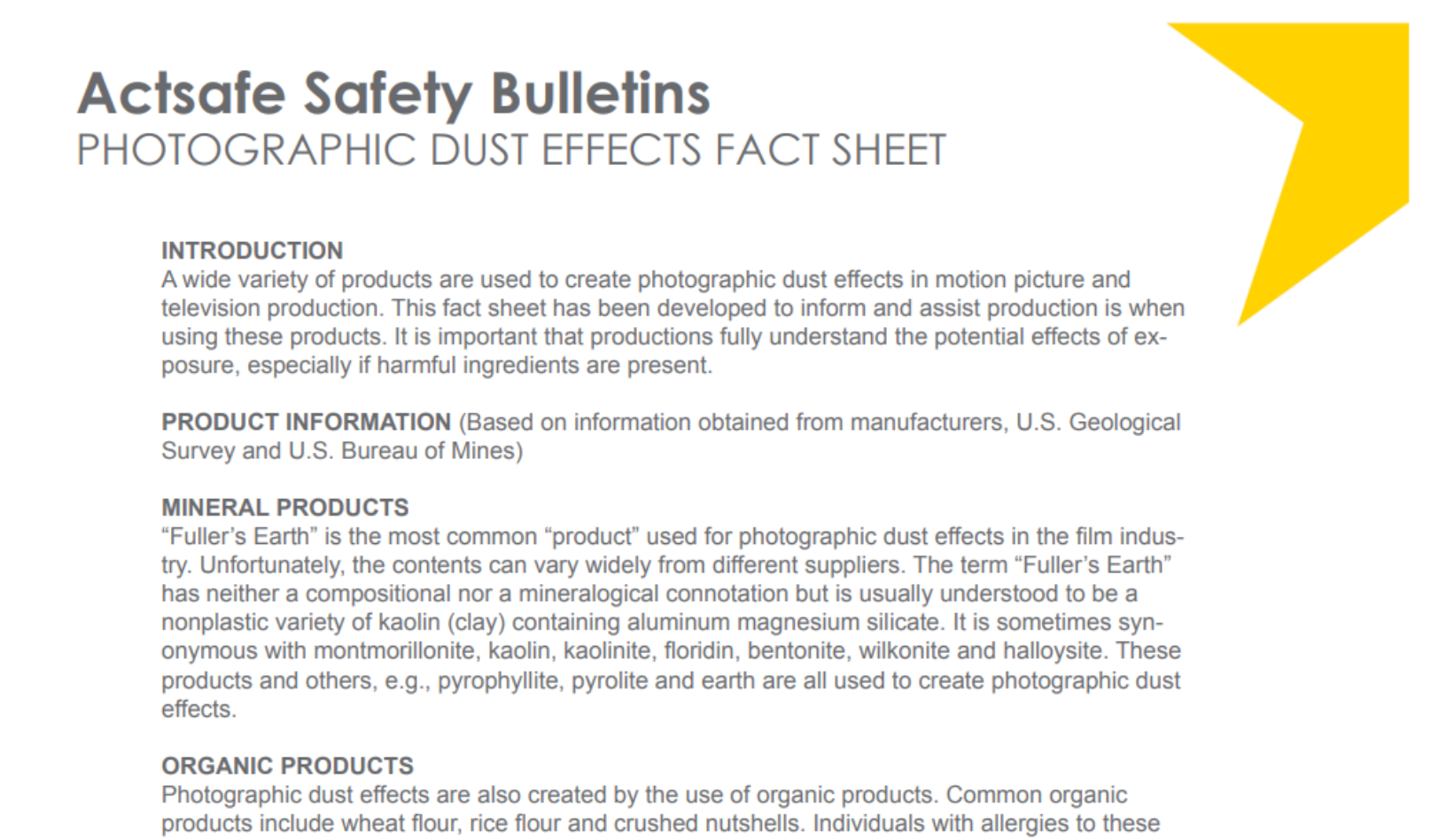INTRODUCTION
A wide variety of products are used to create photographic dust effects in motion picture and television production. This fact sheet has been developed to inform and assist production is when using these products. It is important that productions fully understand the potential effects of exposure, especially if harmful ingredients are present.
PRODUCT INFORMATION (Based on information obtained from manufacturers, U.S. Geological Survey and U.S. Bureau of Mines)
MINERAL PRODUCTS
“Fuller’s Earth” is the most common “product” used for photographic dust effects in the film industry. Unfortunately, the contents can vary widely from different suppliers. The term “Fuller’s Earth” has neither a compositional nor a mineralogical connotation but is usually understood to be a non-plastic variety of kaolin (clay) containing aluminum magnesium silicate. It is sometimes synonymous with montmorillonite, kaolin, kaolinite, floridin, bentonite, wilkonite and halloysite. These products and others, e.g., pyrophyllite, pyrolite and earth are all used to create photographic dust effects.
ORGANIC PRODUCTS
Photographic dust effects are also created by the use of organic products. Common organic products include wheat flour, rice flour and crushed nutshells. Individuals with allergies to these products should use caution. As you can see there are many different product(s) available and you need to understand the specific product being used. Each has its own unique properties and potentially adverse effects.
ACTIONS
The following are some actions you can take to minimize potentially harmful exposures to cast and crew.
- Prior to using any materials for photographic dust effects:
- Know the products that you are using.
- Obtain a current Manufacturer’s Material Safety Data Sheet (SDS) for the specific product you are using.
- Avoid products which contain known carcinogens.
- Inform all cast and crew on the products being used and the necessary precautions that should be taken and potential effects.
- Minimize potential exposures:
- Eliminate or limit exposure by removing unnecessary personnel.
- Use only enough product to create the effect needed.
- If indoors, periodically ventilate the area.
- Provide proper Personal Protective Equipment (PPE) as necessary.
POTENTIAL HEALTH EFFECTS
- Common effects of exposure are eye irritation, respiratory irritation from inhalation and skin contact (i.e. contact dermatitis).
- Anyone with allergies, asthma or other respiratory illness or limitations should take appropriate precautions.
REGULATIONS
- Many products have Permissible Exposure Limits (PEL).
- Refer to Federal and WCB Regulations for further information and/or requirements (e.g., WCB of BC OH&S Regulation, Table 5-4).
- Industrial hygiene monitoring may be necessary to determine the airborne concentration and/or particulate size during use.
FURTHER ASSISTANCE
- Studio or Production Safety Representative
- AMPTP/CSATF
- Actsafe
- Supervisor
- Business Agent/Union Offices



Share Now: